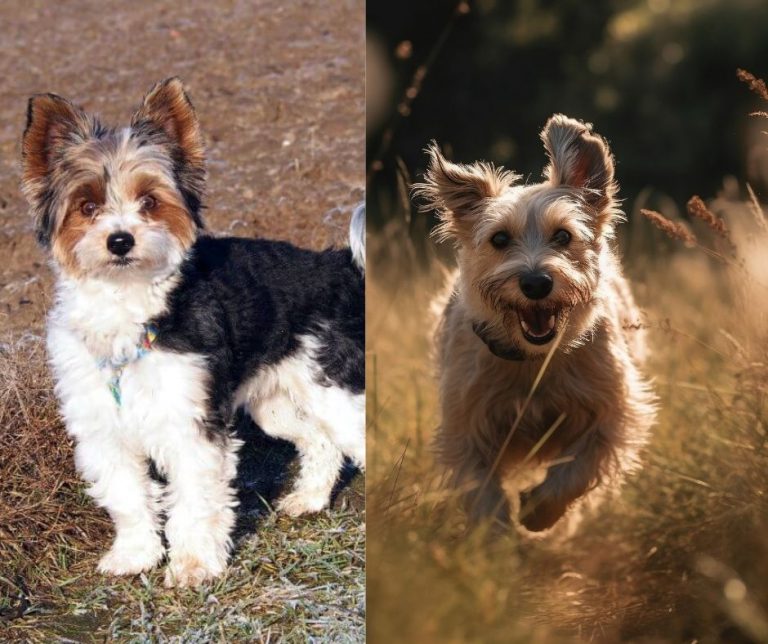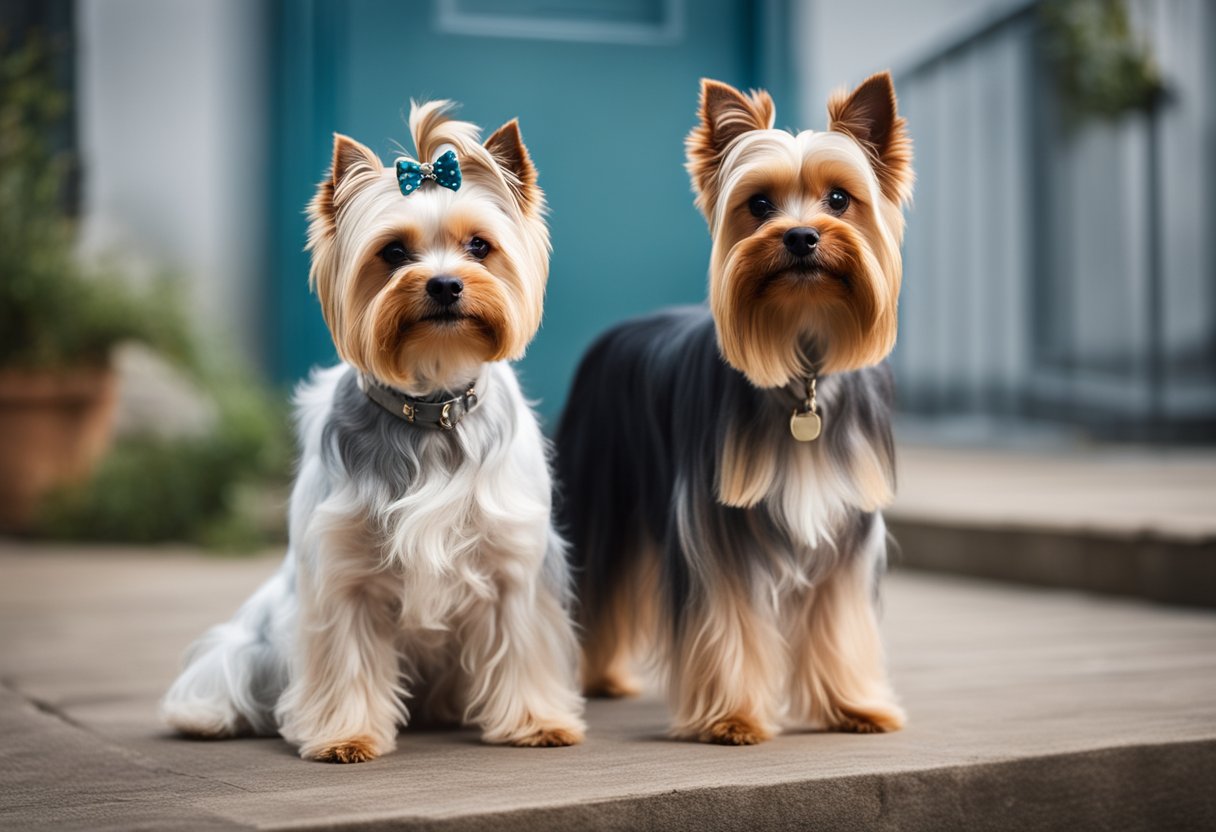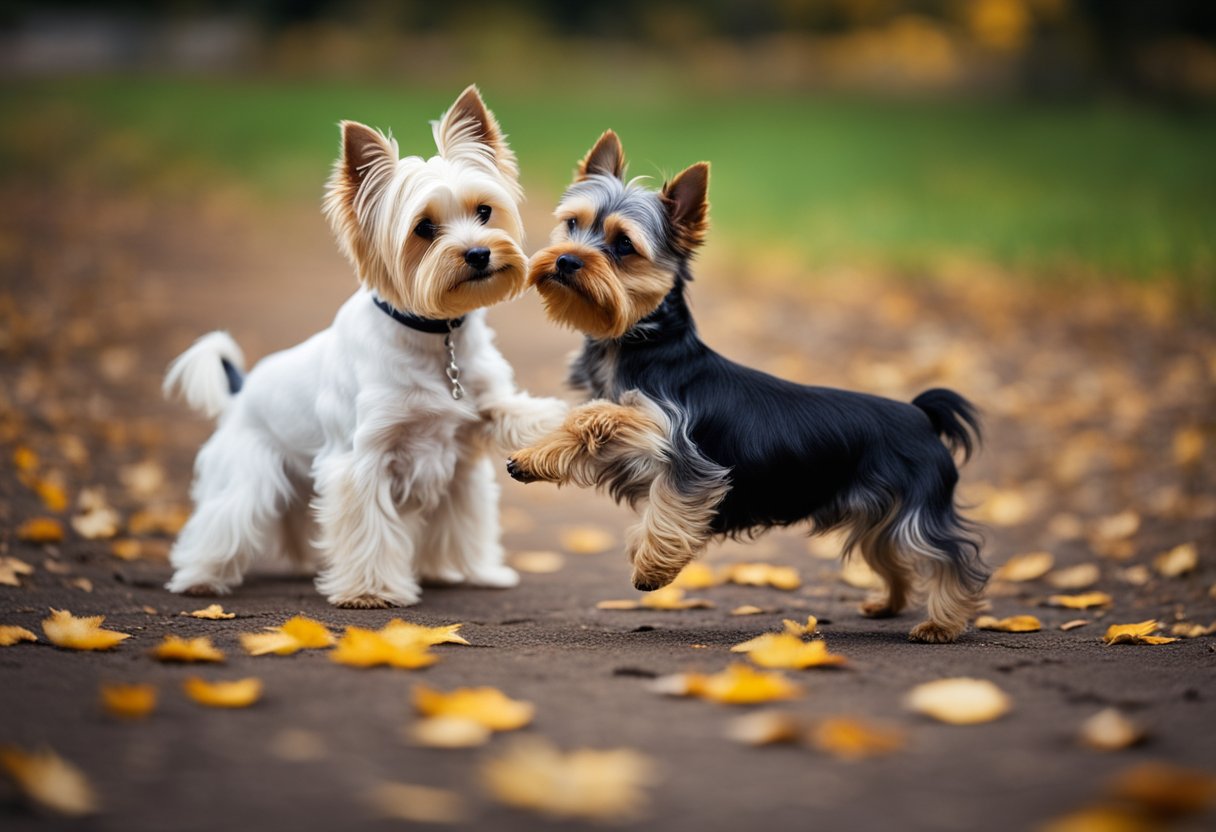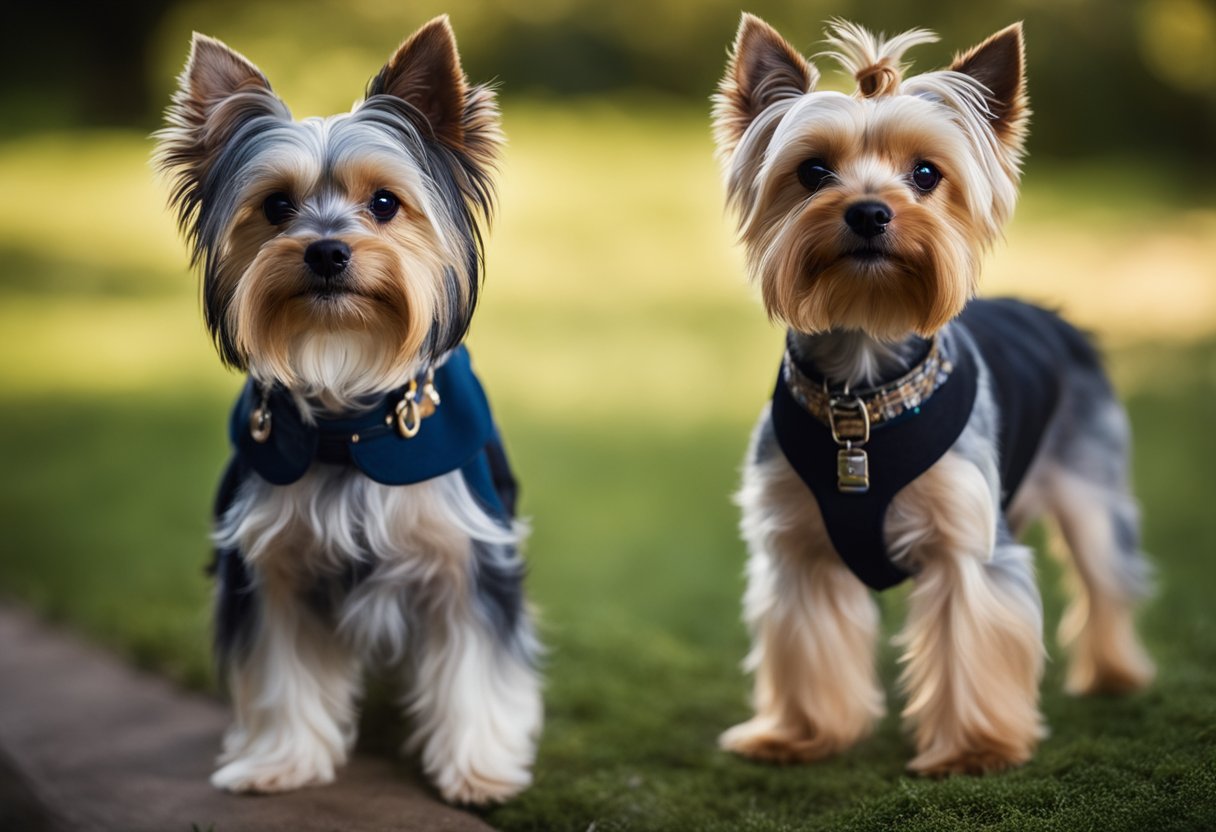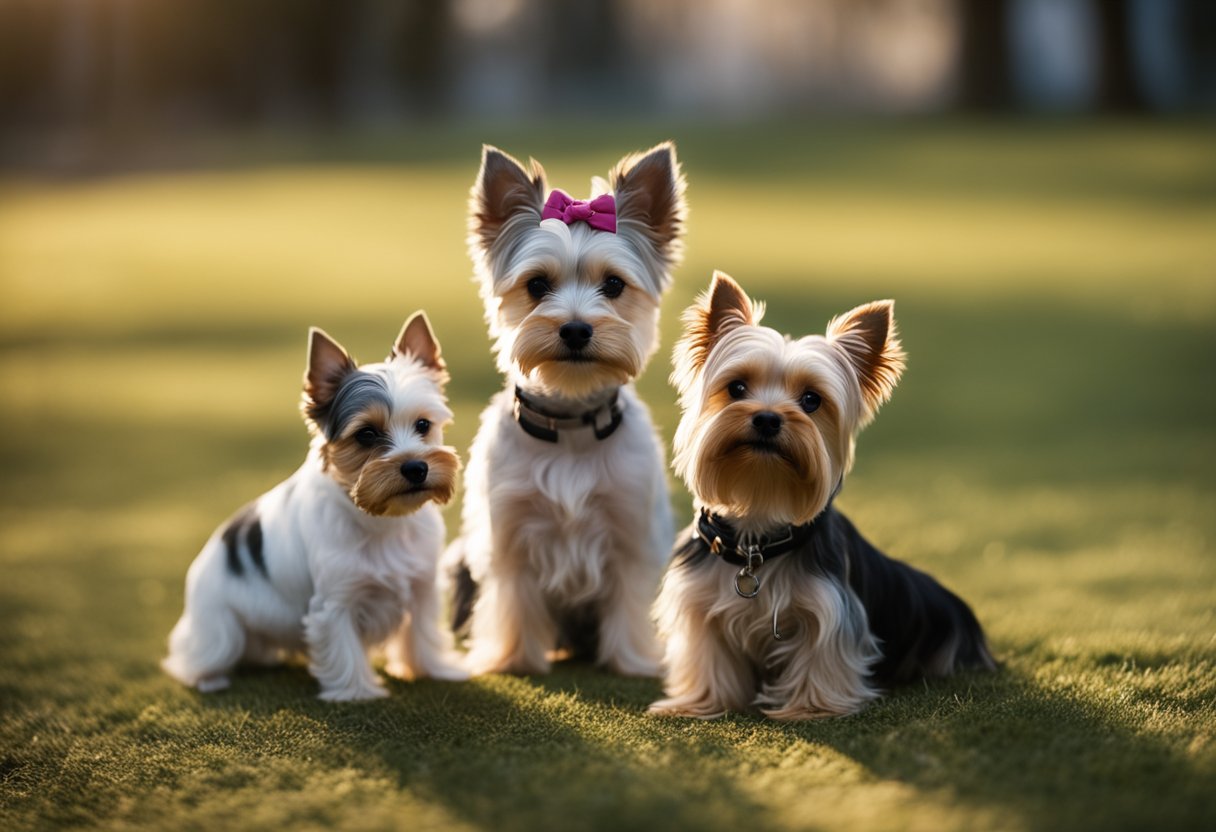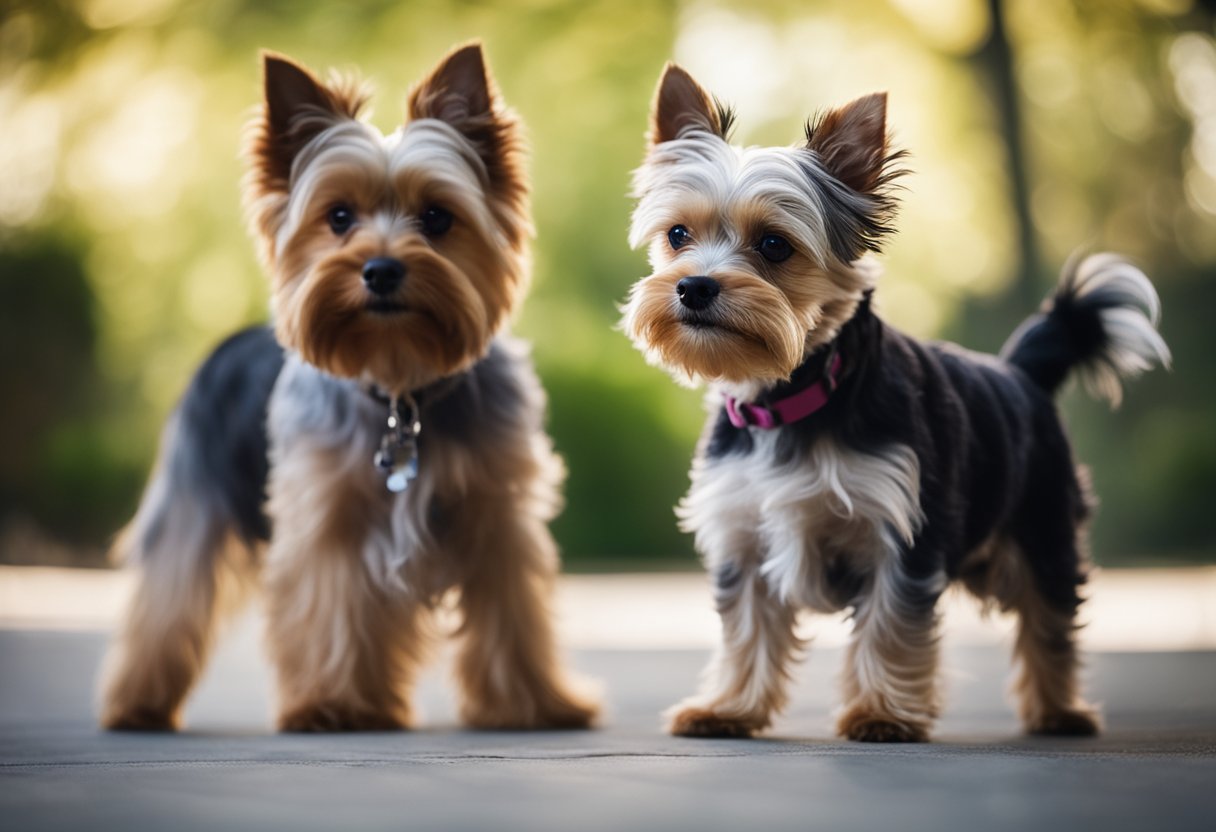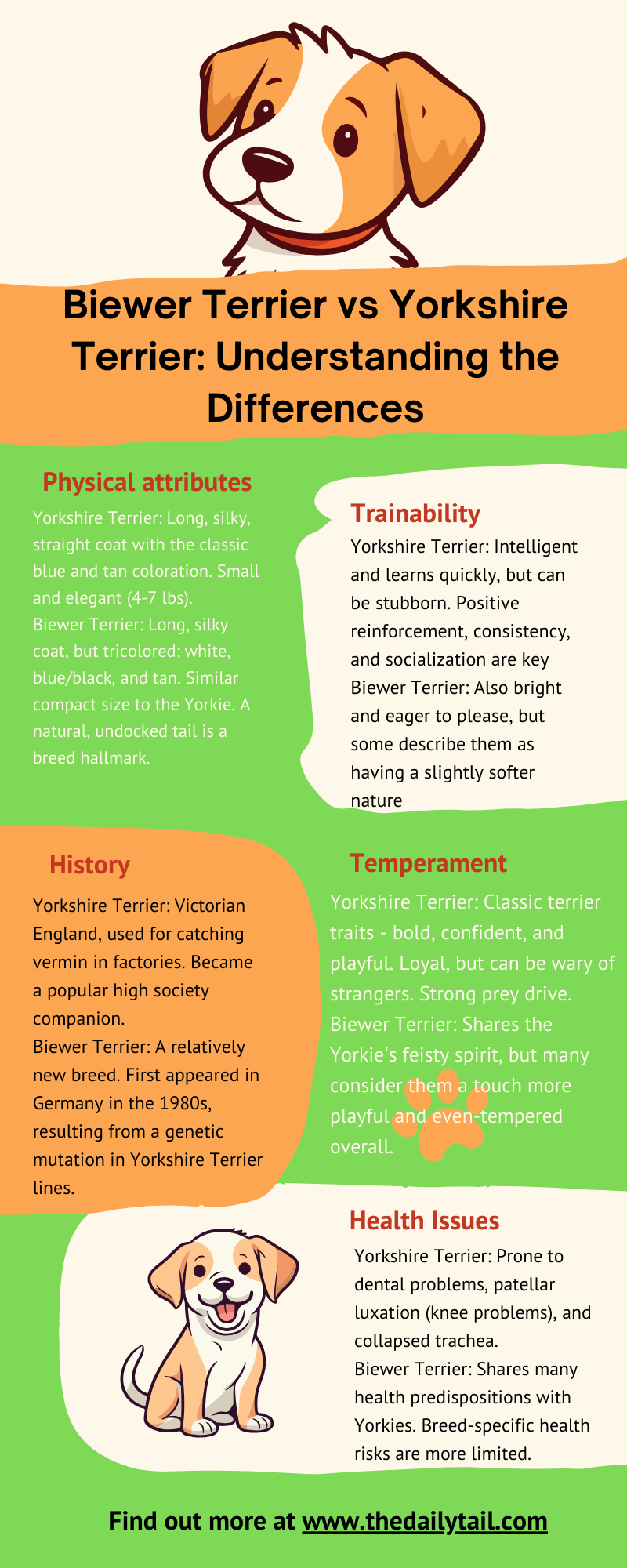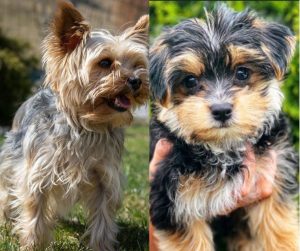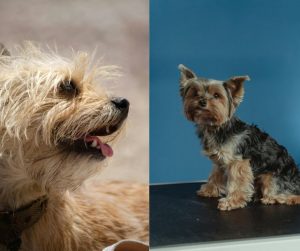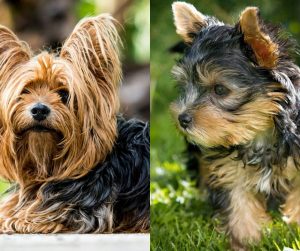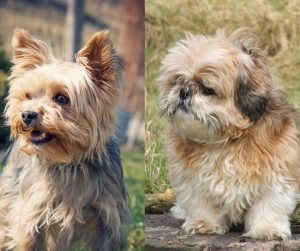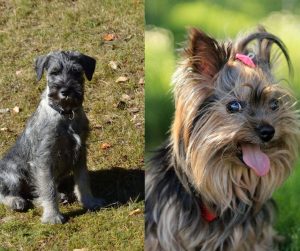Think you can spot a Yorkie a mile away? My years with dogs were put to the test when I first encountered a Biewer Terrier.
The Biewer Terrier and Yorkshire Terrier present a fascinating comparison for anyone considering a small dog breed. Both originating from the Yorkshire Terrier lineage, these two breeds share a number of traits yet maintain distinct differences that potential owners should consider. The Biewer Terrier, often referred to simply as Biewer, is a breed that derived from a piebald genetic recessive gene found in two Yorkshire Terriers. This result was a new breed first born in Germany in 1984, named after the breeders, Gertrud and Werner Biewer.
While the Biewer Terrier puppy and the Yorkshire Terrier puppy, commonly known as Yorkie, are both excellent choices for new or inexperienced owners, their difference in appearance is one of the most noticeable features that set them apart. The Biewer Terrier boasts a tri-colored coat typically consisting of white, black, and tan colors, distinguishing it from the Yorkie’s blue and tan coat. In terms of size, both breeds are similar, with the Biewer Terrier ranging from 7 to 11 inches in height and the Yorkie from 8 to 9 inches, while their weights are also comparable.
The personality and temperament of both breeds tend to be affectionate and loyal, contributing to their popularity among dog lovers. However, slight variations in these traits along with grooming needs and health considerations are informative factors for anyone deciding between a Biewer and a Yorkshire Terrier. The decision ultimately rests on individual preferences for coat patterns, slight size differences, and the unique character of each breed.
Today, we will look at the Biewer Terrier vs Yorkshire terrier dog breed comparison. After years with countless breeds, the Yorkshire Terrier vs. Biewer Terrier debate still surprises me. Here’s what only an experienced dog owner might notice.
Origin and History
The intricacies of canine development are exemplified in the origins and historical pathways of the Biewer Terrier and the Yorkshire Terrier. Each breed reflects a unique journey shaped by location, purpose, and breeding decisions.
Origins of the Biewer Terrier
The Biewer Terrier breed emerged from Germany in the 1980s. Originating from a specific breeding line of Yorkshire Terriers, it was developed by Mr. and Mrs. Biewer, who aimed to achieve a dog with distinctive tri-colored markings. Their breeding program was eventually recognized, and by 2014 the Biewer Terrier gained acceptance by the American Kennel Club Foundation Stock Service (ACK/FSS), distinguishing it as a separate breed from the purebred Yorkshire Terrier.
History of the Yorkshire Terrier
In contrast, the Yorkshire Terrier breed boasts a more extended history dating back to the 19th century in England. Originally bred for the purpose of catching rats in mills, the Yorkshire Terrier emerged from the pairing of various terrier breeds. Over time, it became popular among the English elite for its fine coat and elegant appearance. This breed has long been recognized by the American Kennel Club (AKC) as a purebred dog, reflecting its well-established lineage.
Physical Characteristics
Biewer and Yorkshire Terriers showcase distinct physical traits that define each breed. Their sizes and coat patterns are notably different, and these characteristics are integral when identifying each breed.
Size and Weight
The Biewer Terrier typically stands about 7 to 11 inches tall and weighs between 4-8 pounds. Meanwhile, the Yorkshire Terrier generally measures in the range of 8-9 inches in height and weighs 4-7 pounds.
Coat and Colors
Yorkshire Terriers have a coat that is traditionally dark steel blue and tan, which tends to become lighter with age. The hair is glossy, fine, and straight. In contrast, the Biewer Terrier sports a tri-colored coat usually consisting of white, blue, and gold. This breed’s long, silky coat is a result of the piebald gene, giving them distinct white patches.
Distinctive Features
The tail of the Biewer Terrier is often described as a plume, carried high over its body. The breed’s piebald genetic history leads to more variation in the patterns of their hair color. The Yorkshire Terrier’s features include its compact size and traditional blue and tan coat, with the hair on its head being so long that it’s often necessary to gather it in a band to keep from obscuring the dog’s vision.
Personality and Temperament
When comparing the Biewer Terrier vs Yorkshire Terrier, it becomes evident that both breeds share a lively and affectionate nature, but they also have distinct personalities shaped by their breed histories.
Biewer Terrier Temperament
The Biewer Terrier breed, originally part of the Yorkshire Terrier lineage, displays a friendly and playful disposition, embodying both the inquisitiveness of terriers and a certain degree of independence. These dogs are smart and loving, often forming strong bonds with their owners, which is manifested in their loyalty. They might showcase some stubbornness, but with consistent training, they can be quite amiable companions. The Biewer Terrier is generally energetic, requiring regular playtime, and they thrive in active homes.
Yorkshire Terrier Temperament
Yorkshire Terriers, affectionately known as Yorkies, are renowned for their unwavering loyalty and affectionate nature, making them excellent companion pets. Their temperament is a blend of a terrier’s tenacity and an eagerness to please, which makes them smart and relatively easy to train. Despite their small size, Yorkies are playful and energetic, requiring a good amount of daily activity. They are also known for being loving towards their owners, but they can be somewhat independent, which may translate to occasional stubborn behaviors.
Health and Lifespan
When comparing Biewer Terriers to Yorkshire Terriers, understanding their health and expected lifespan is crucial. Both breeds can enjoy relatively long lifespans for small dogs and have a number of common health issues potential owners should be aware of.
Common Health Issues
Both breeds may encounter breed-specific health problems that require attentive care. Concerns such as hypoglycemia and progressive retinal atrophy are noteworthy, as they can affect the quality of life for these dogs.
Biewer Terrier Health
Biewer Terriers have an average lifespan of 14 to 16 years. They are generally healthy but, like all breeds, they can be subject to certain health conditions. Among those conditions, the following are relatively common in Biewer Terriers:
- Hypoglycemia: Low blood sugar, which is particularly a concern in smaller breeds
- Progressive Retinal Atrophy (PRA): A degenerative eye disorder that can eventually lead to blindness
It is essential for Biewer Terrier guardians to monitor their pet’s health closely and maintain regular veterinary checkups.
Yorkshire Terrier Health
Yorkshire Terriers also typically enjoy a lifespan of 13 to 16 years. They are known to be robust for their size, but they can face several health challenges:
- Hypoglycemia: Common in many toy breeds and can be managed with proper diet and care
- Progressive Retinal Atrophy (PRA): This condition can occur in Yorkies, emphasizing the importance of regular eye exams
Regular health screenings and preventive care are recommended to identify and manage any potential health issues early on.
Care Requirements
Understanding the care requirements for Biewer Terriers and Yorkshire Terriers is essential for maintaining their health and well-being. Each breed has its own set of needs regarding grooming, exercise and diet, and training and socialization.
Grooming Needs
Biewer Terriers have a long, tri-colored coat that is prone to matting. Regular brushing—at least a few times a week—is necessary. They benefit from professional grooming to maintain coat length and health. In contrast, Yorkshire Terriers also require frequent brushing due to their fine, silky fur, but they typically have a single-colored coat that can vary in length depending on owner preference and show standards.
- Brushing: Minimum 3 times a week
- Shedding: Low to moderate
- Coat care: Professional grooming recommended
Exercise and Diet
Both breeds are energetic, yet their exercise needs slightly differ. Biewer Terriers tend to be more energetic and need daily walks coupled with playtime. Yorkshire Terriers also require regular exercise to keep them fit and to prevent behavioral issues. When it comes to diet, high-quality dog food suitable for the respective size and energy level of the breed is recommended.
- Exercise Requirements: Daily walks and playtime
- Diet: High-quality dog food, portion control essential
- Health: Regular exercise promotes overall health
Training and Socialization
Training should begin early for both breeds due to their intelligence and trainability. They respond well to positive reinforcement techniques. Socialization is also key, helping prevent any territorial or aggressive behaviors from developing. Consistent training helps temper their energetic nature and ensures they are well-adjusted pets.
- Trainability: High; positive reinforcement yields best results
- Intelligence: Both breeds are quite intelligent
- Social Needs: Early and regular socialization needed
Biewer Terrier vs. Yorkshire Terrier
When considering the Biewer and Yorkshire Terriers, one must pay attention to their distinctive features as well as the substantial similarities that often lead to confusion between the two breeds.Key Differences
Size: The Biewer Terrier typically measures between 7 to 11 inches in height, whereas the Yorkshire Terrier stands slightly shorter at around 8-9 inches tall.
Weight: Biewer Terriers have a weight range of 4-8 pounds, making them potentially a bit heavier than Yorkshire Terriers, which tend to weigh between 4-7 pounds.
Coat Color: Yorkshire Terriers are known for their almost black coat at birth, which gradually transitions to a mix of blue and tan as they mature. In contrast, Biewer Terriers are identified by their distinct piebald coloration, which is a result of a recessive gene and showcases a combination of white with black and tan markings.
Origins: The Biewer Terrier is a separate breed that originated from a Yorkshire Terrier lineage in Germany during the 1980s due to a unique piebald gene mutation. Meanwhile, the Yorkshire Terrier has a more established lineage with origins in England for use in catching rats in mills.
Similarities and Overlap
Breed Popularity: Both breeds are popular choices for dog lovers, especially those looking for a small, companion-sized pet.
Temperament: They share a similar temperament, often described as intelligent, courageous, and energetic, making both suitable for various types of households including those with children, albeit socialization and proper introduction are important.
Coat Care: Both breeds require regular grooming due to their long, silky coats; however, the Biewer Terrier’s coat may demand slightly more attention because of the additional white fur that can show dirt more readily.
Recognition: The Biewer Terrier was only recognized by the American Kennel Club in 2021 but has been rapidly gaining recognition as a distinctive breed. The Yorkshire Terrier has been recognized for a much longer period and is well-established within various kennel clubs around the world.
By understanding the subtleties in size, coat, and origins, and acknowledging the shared traits in temperament and grooming needs, one can appreciate the distinctiveness as well as the overlap between the Biewer and Yorkshire Terriers.
Living with a Terrier
Living with terrier dogs, whether it’s a Biewer Terrier puppy or a Yorkshire Terrier puppy, means accommodating their lively and energetic nature. These small, intelligent dogs are adaptable and make excellent indoor companions, bringing joy and vibrancy to any home environment.
Apartment Living
Biewer and Yorkshire Terriers are well-suited for apartment living due to their small size. However, being energetic and playful, they do require daily exercise to remain content. This can include indoor play and short walks. These breeds are known for their ability to adapt well to indoor life, but it is essential to provide them with enough stimulation to curb any potential for destructive behavior.
Exercise Needs:
- Indoor play: Vital for mental stimulation
- Short walks: Necessary for physical health
Family and Children
Both Biewer and Yorkshire Terriers can fit into family settings and are generally loving towards children. It is important, however, to supervise interactions with younger children to prevent accidental injury due to their small size. These terriers often form strong, affectionate bonds with their family members and can be very loyal.
Child-Friendliness:
- Supervision: Required with younger children
- Affection: Highly affectionate towards family members
Adaptability
Their adaptability is one of the most advantageous traits of these toy companion dogs. Despite their size, both Biewers and Yorkies can be vigilant watchdogs, often alerting their owners with barking if anything unusual is detected. Their intelligence makes them trainable, though their independent nature can at times require a patient and consistent training approach.
Adaptability Traits:
- Watchdogs: Effective despite their small stature
- Intelligence: High, leading to trainability with consistency
Breed Popularity and Availability
When considering the acquisition of either a Biewer or Yorkshire Terrier, potential owners will find variations in breed popularity, AKC recognition, and availability. Prices can fluctuate based on pedigree and the reputation of the breeder.
American Kennel Club Recognition
The Yorkshire Terrier breed is a well-established breed recognized by the American Kennel Club (AKC) since 1885. They are consistently listed as one of the most popular breeds, making them widely available through reputable breeders. On the other hand, the Biewer Terrier was only officially recognized by the AKC in January 2021. Although newer, the Biewer Terrier’s recognition signifies its emerging popularity and increased breeding efforts.
- Yorkshire Terrier
- AKC Recognition: Established in 1885
- Popularity: Consistently high
- Biewer Terrier
- AKC Recognition: Granted in 2021
- Popularity: Growing
Finding a Reputable Breeder
When seeking a purebred dog, whether a Yorkshire or Biewer Terrier, it is imperative to find a breeder who prioritizes the animals’ health and adheres to breed standards. Reputable breeders can command higher prices, reflected in the cost and rarity of a well-bred puppy. Availability might differ significantly between the breeds, with Yorkshire Terriers being more accessible due to their long-standing popularity.
- Breeder Criteria
- Health clearances and genetic testing
- Adherence to AKC breed standards
- Pricing Indicators
- Pedigree
- Rarity of the breed
- Breeder’s reputation
It’s important for prospective owners to research and compare breeders, considering the potential wait times that may be associated with obtaining a rare, purebred Yorkie or Biewer from a high-quality line.
Common Questions about Terriers
When considering a Biewer or Yorkshire Terrier, potential owners often have concerns about allergies, climate adaptability, and the cost of owning one of these affectionate pets. Terrier dogs are a special dog breed, and you need to know how to handle them.
Are they Hypoallergenic?
Biewer Terrier: Yes, they are considered hypoallergenic. They have a fine, silky coat that sheds very little. Yorkshire Terrier: Similarly, Yorkies are also hypoallergenic, making them suitable for individuals with allergies.
Can they Adapt to Different Climates?
Biewer Terrier:
- Warm climates: They can adjust but may need protection from extreme heat
- Cold climates: They can cope but require appropriate clothing for warmth due to their fine coat
Yorkshire Terrier:
- Warm climates: Just like the Biewer, they can handle warmth with considerations for shade and hydration
- Cold climates: Yorkies also need protection against the cold, preferring a moderate climate or indoor warmth when outdoors temperatures are low
What is the Cost of Ownership?
Biewer Terrier:
- Initial cost: The price of a Biewer can vary widely based on lineage and breeder location
- Maintenance cost: Grooming, vet visits, and a diet high in quality contribute to ongoing costs
Yorkshire Terrier:
- Initial cost: Yorkies may come with a high price tag, especially for purebred or show-quality dogs
- Maintenance cost: Regular professional grooming, healthcare, and nutritious food are primary expenses for Yorkies

